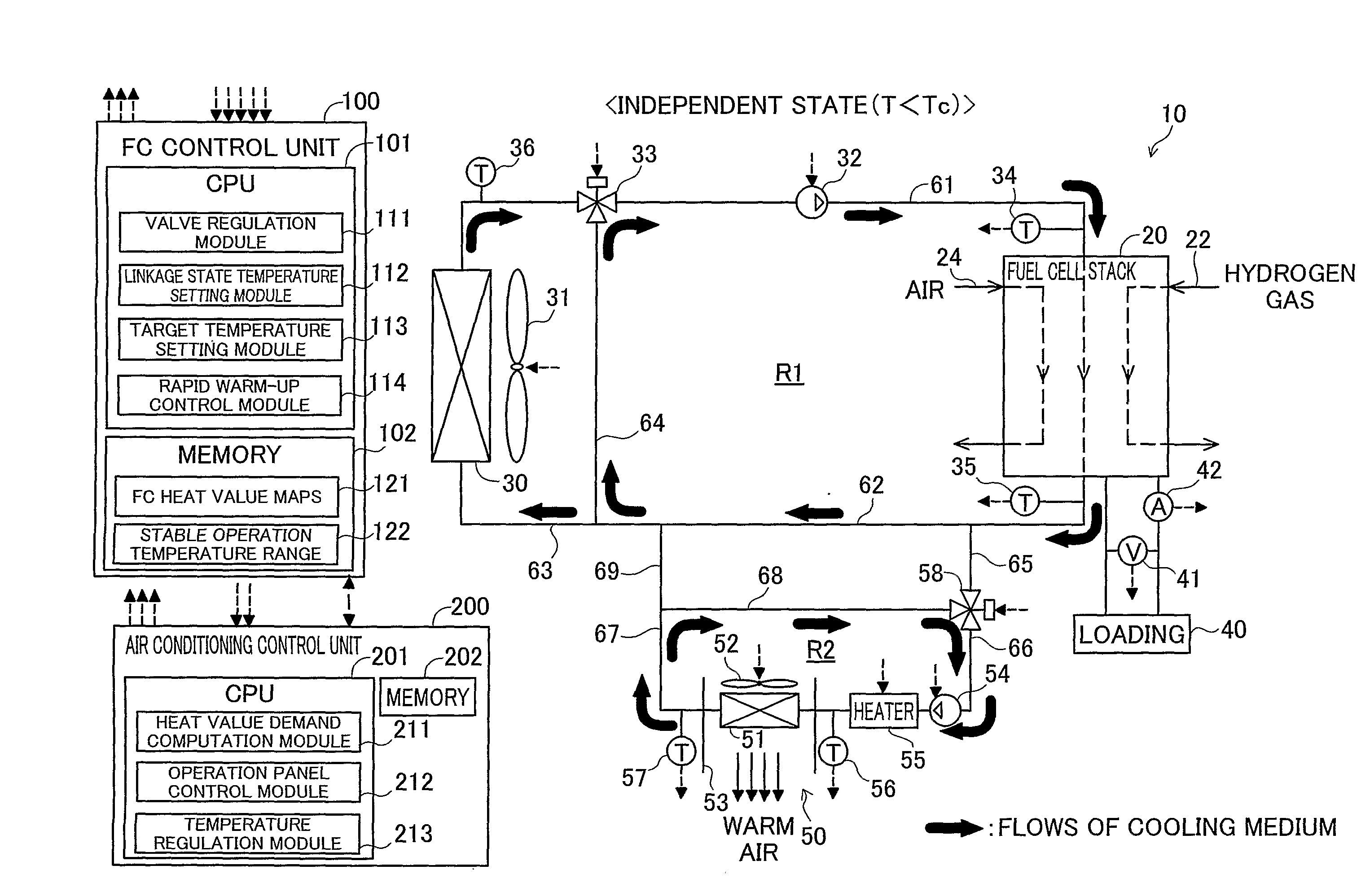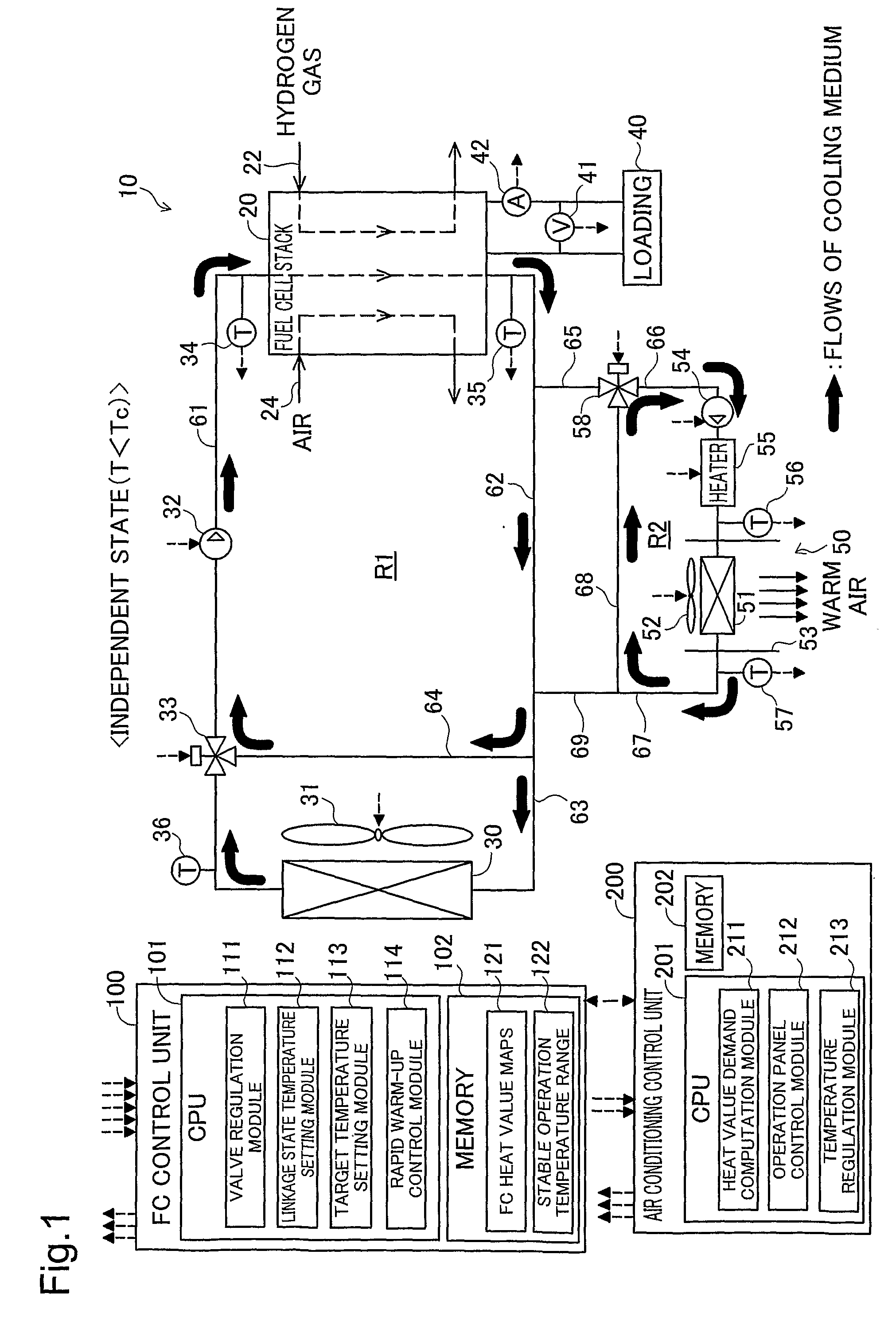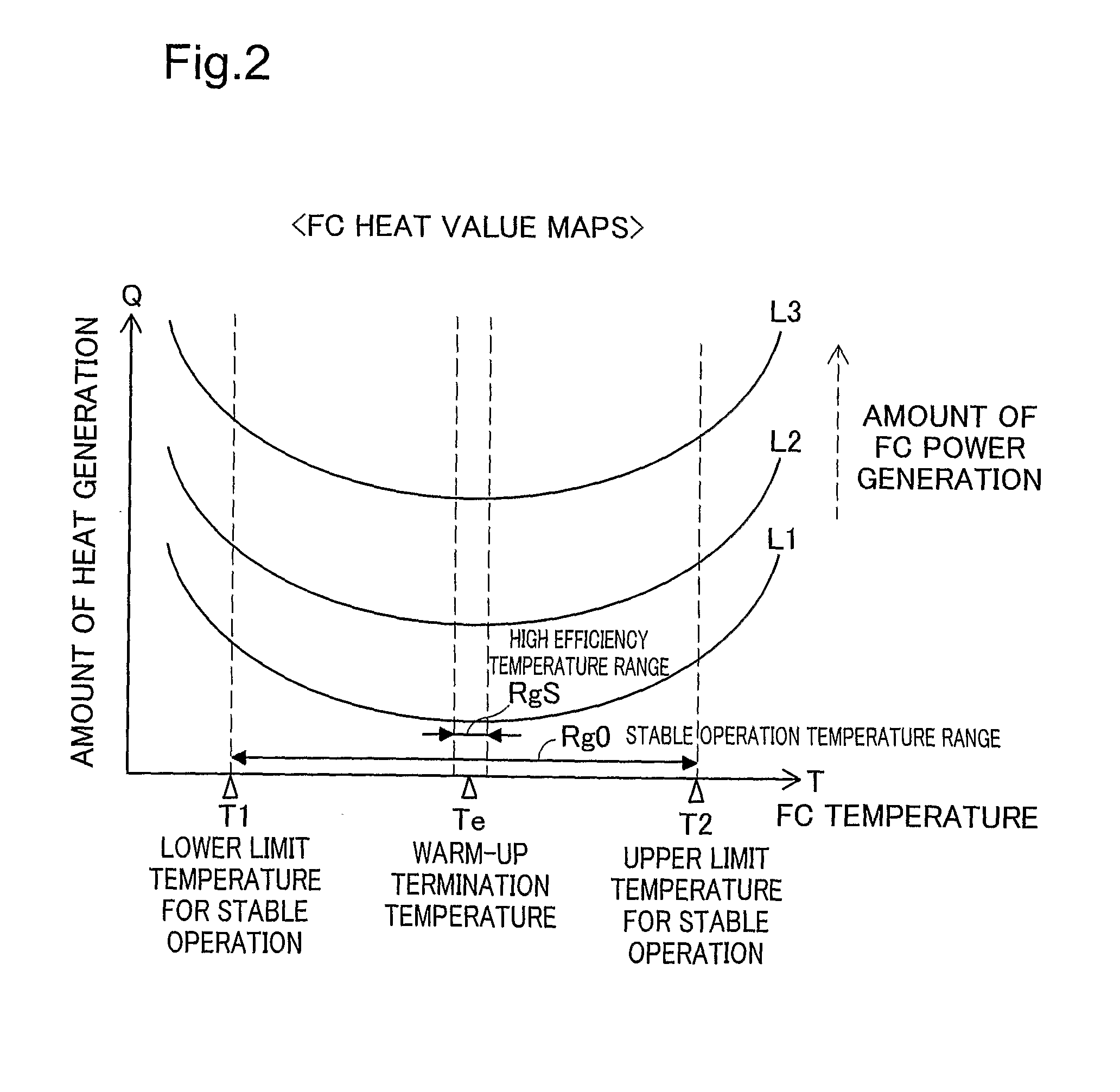Vehicle control apparatus and vehicle control method
a vehicle control and vehicle technology, applied in process and machine control, electrochemical generators, instruments, etc., can solve the problems of improving the overall fuel consumption of the vehicle control apparatus, and achieve the effect of improving the overall fuel consumption of the vehicle control devi
- Summary
- Abstract
- Description
- Claims
- Application Information
AI Technical Summary
Benefits of technology
Problems solved by technology
Method used
Image
Examples
embodiment
A. Embodiment
A1. SYSTEM CONFIGURATION
[0034]FIG. 1 is an explanatory view illustrating the schematic configuration of a vehicle control device according to one embodiment of the invention. This vehicle control device 10 is mounted on an electric vehicle that is driven with consumption of electric power generated by fuel cells as the driving power. The vehicle control device 10 includes a fuel cell stack 20 (in the specification hereof, ‘fuel cell’ may be abbreviated as FC), a first medium circuit R1, an air conditioning mechanism 50, a second medium circuit R2, two medium flow paths (fifth and ninth medium flow paths) 65 and 69 arranged to interconnect the two medium circuits R1 and R2, an FC control unit 100, and an air conditioning control unit 200.
[0035]The fuel cell stack 20 of this embodiment is a stack of polymer electrolyte fuel cells obtained by stacking multiple unit cells including membrane electrode assemblies (MEA). The fuel cell stack 20 receives a supply of hydrogen gas...
modified example 1
B1. MODIFIED EXAMPLE 1
[0104]The temperature setting process of the above embodiment sets the lower limit temperature T1 of the stable operation temperature range Rg0 to the linkage state temperature Tc. Such temperature setting is, however, neither essential nor restrictive. One modified procedure may set the linkage state temperature Tc to any arbitrary temperature in a temperature range specified according to the durability performance of the fuel cell stack 20. In general, in a working environment with a temperature out of a preset temperature range (generally a narrower temperature range than the stable operation temperature range Rg0), the electrolyte membranes and the catalyst layers in the respective unit cells quickly deteriorate, for example, due to the current crowding effect. Setting the linkage state temperature Tc to any arbitrary temperature that is not lower than a lower limit temperature but is not higher than an upper limit temperature of the temperature range speci...
modified example 2
B2. MODIFIED EXAMPLE 2
[0108]The temperature setting process of the above embodiment sets the target temperature Tt to either the upper limit temperature T4 of the below-demand temperature range Rg1 or the upper limit temperature T2 of the stable operation temperature range Rg0. Such temperature setting is, however, neither essential nor restrictive. In the illustrated example of FIG. 4, one modified procedure may set the target temperature Tt to any arbitrary temperature that is higher than the upper limit temperature T4 of the below-demand temperature range Rg1 but is lower than the upper limit temperature T2 of the stable operation temperature range Rg0. In the state where the below-demand temperature range Rg1 is present in the referred heat value map, this modified procedure sets a higher temperature to the target temperature Tt and thereby enables a greater amount of heat to be accumulated in the two medium circuits R1 and R2. This modified arrangement assures a quick response ...
PUM
| Property | Measurement | Unit |
|---|---|---|
| linkage state temperature | aaaaa | aaaaa |
| temperature | aaaaa | aaaaa |
| cell voltage | aaaaa | aaaaa |
Abstract
Description
Claims
Application Information
 Login to View More
Login to View More - R&D
- Intellectual Property
- Life Sciences
- Materials
- Tech Scout
- Unparalleled Data Quality
- Higher Quality Content
- 60% Fewer Hallucinations
Browse by: Latest US Patents, China's latest patents, Technical Efficacy Thesaurus, Application Domain, Technology Topic, Popular Technical Reports.
© 2025 PatSnap. All rights reserved.Legal|Privacy policy|Modern Slavery Act Transparency Statement|Sitemap|About US| Contact US: help@patsnap.com



